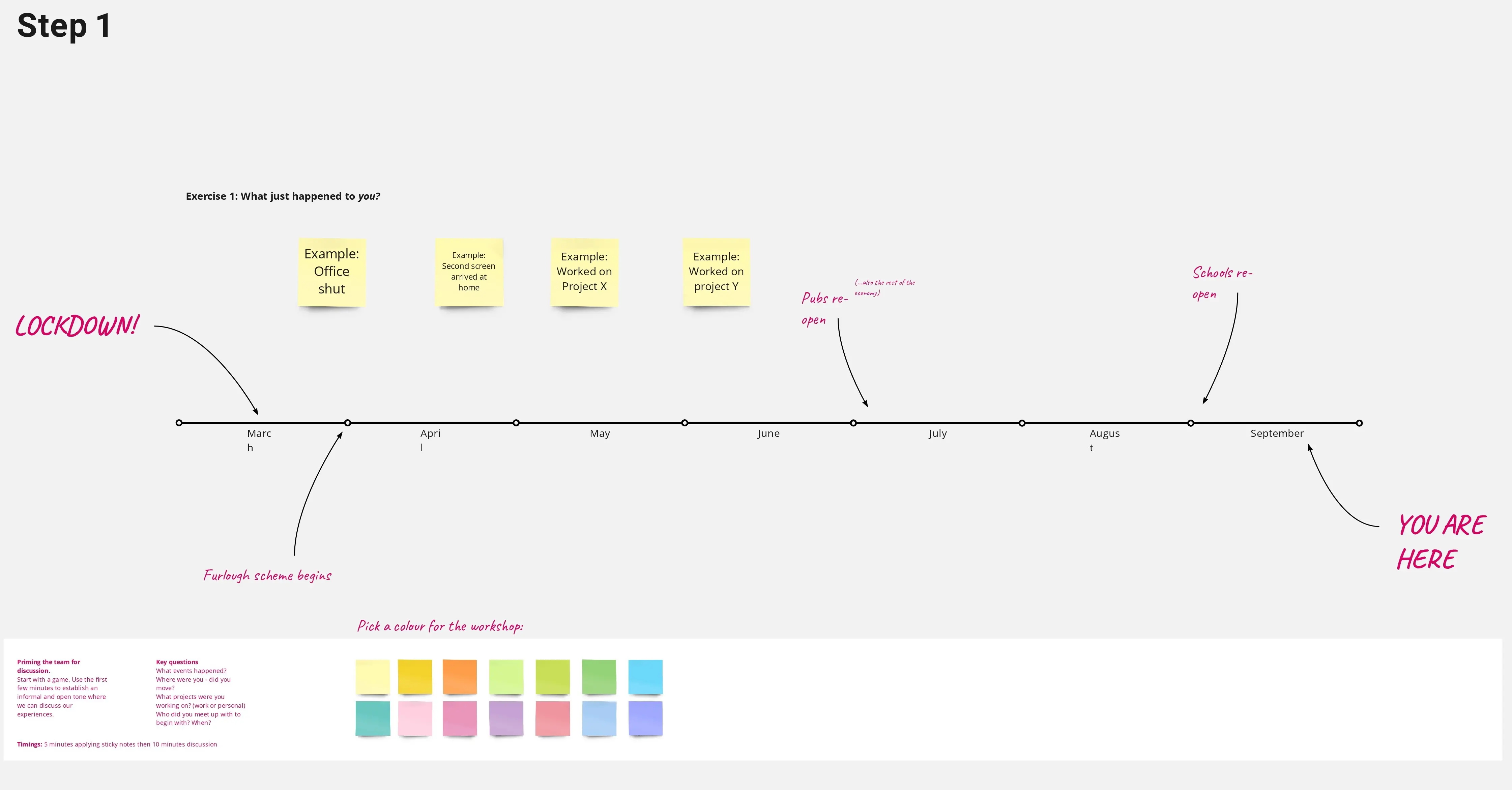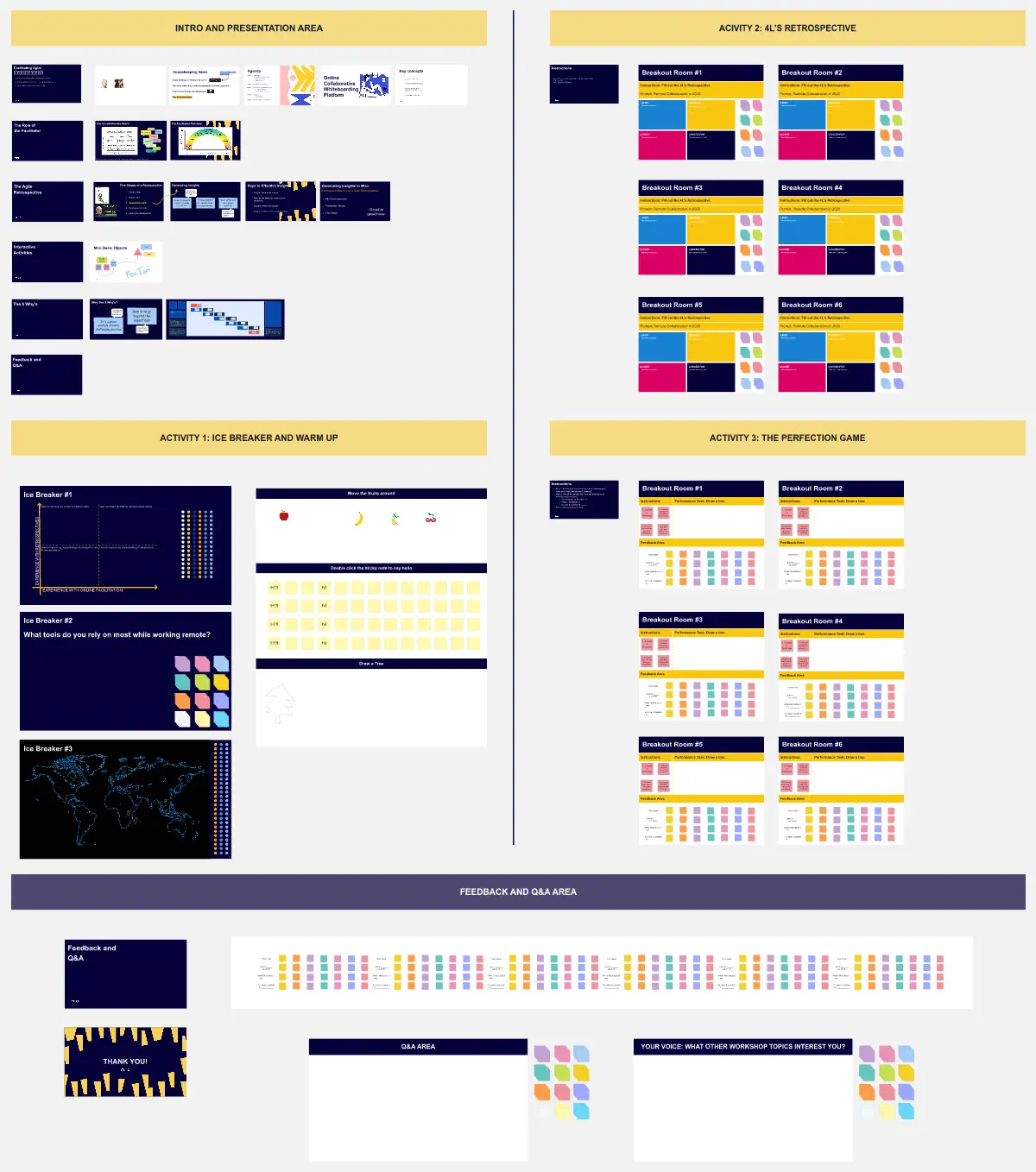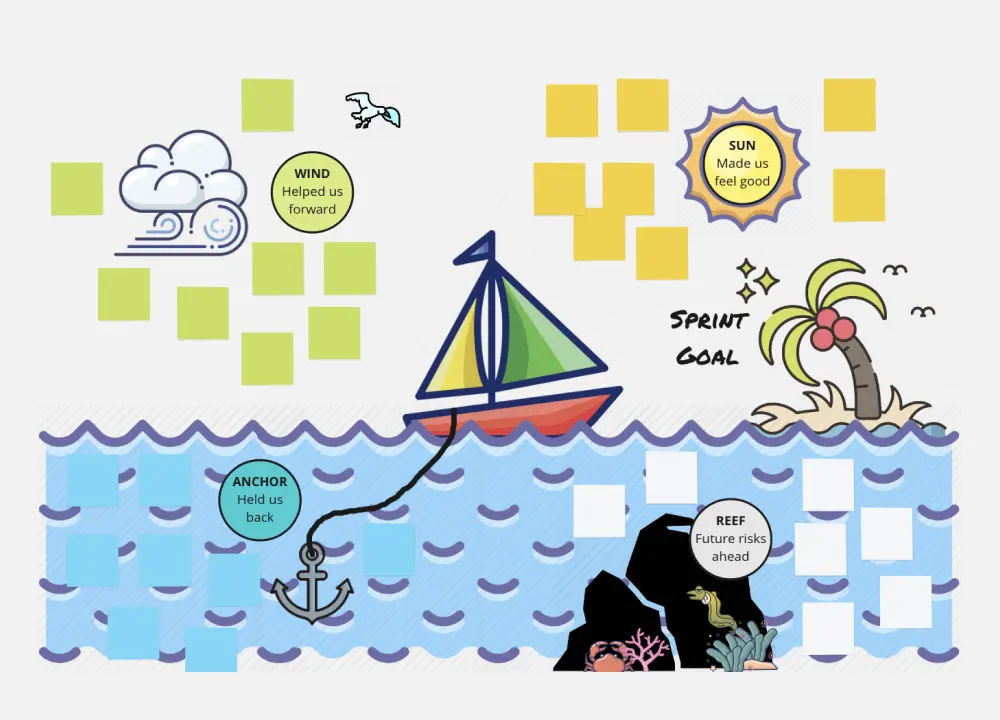Agile Retrospective
This template offers scaffolding frames for the 5 steps of an Agile Retrospective to follow a structure that helps focusing the group on the work at hand, getting a shared perspective, fostering divergent thinking, coming up with actionable ideas and closing with a sense of having achieved something.
When to use this template?
You should try it if you your “retrospectives” are feeling ineffective and you have a feeling nothing ever changes, other challenges it helps with:
When you have room full of disengaged individuals
When your actions land on premature convergence and habitual thinking
Or there are no actions at all
Each frame has a set of activities that would fit a team of 5 or 6 looking at a 10/15 days time span. You should change activities if you think they don’t fit in your context.
How does a five steps Agile Retrospective work?
As a tech lead, scrum master or product manager you are challenged with running effective retrospectives. This template will guide you to focus on:
Setting the stage to be present and energized in a blame free mindset.
Clarify roles. Could it be useful to have somebody taking notes while you focus on facilitation? How about a timekeeper?
Is there any team agreement we need to highlight. The OARRs is the place!
You can then read Kerth’s prime directive from the template. Then you can do a voting on the ESVP (Explorer, Shopper, Vacationer, Prisoner). If everybody is a prisoner would it be beneficial to focus on why that is rather than going ahead with your plan?
Gather data to pause and collect all perspectives about the topic. The FRIM activity in the template uses axis with Frequency and Impact for the events we share.
Generate insights, divergent thinking about how the next iteration can be the best one yet?
Decide what to do to browse the ideas that emerged during generate insights and decide which ones we want to tackle in the next iteration. The template activity circles and soups allows to visualize what the team can control and the rest.
Close out to get feedback on the retrospective. In the template use ROTIPlusDelta to determine how the retrospective went and collect one change that would have increased your return on time invested and one thing you liked about the session.
If you’re used to the 3 column approach I wrote a blog post discussing pro and challenges of moving away from that.
The Agile Retrospective template is a Miro representation of an Agile Retrospective as intended by its creators in the seminal book “Agile Retrospectives Making good teams great” by Esther Derby and Diana Larsen. All activities are credited in the template itself.
Watch a video
Categories
Similar templates







Comments
Read our Community Guidelines and Terms of Use.